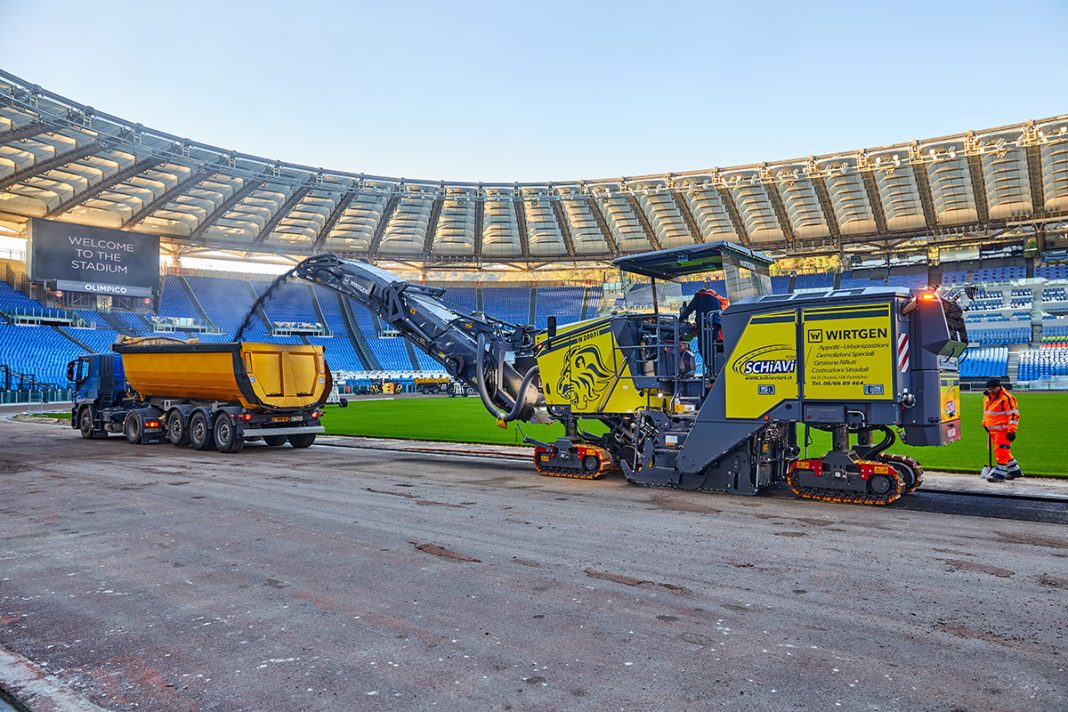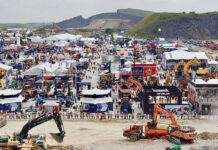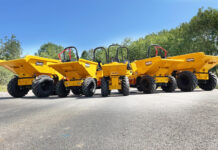Renovation of the athletics track with a cold milling machine
Built in 1927 as Stadio dei Cipressi (Cypress Stadium), the Stadio Olimpico has hosted a wide variety of major events, ranging from the Summer Olympic Games and concerts to the 2020 European Cup.
The stadium in the centre of Rome has now become the scene of extensive renovation work. Wirtgen supplied a W 200 Fi for the project, and the cost-efficient, resource-friendly cold milling machine impressed with outstanding flexibility, speed and outstanding performance.
Level Pro Active guarantees precise cross-slope
The renovation was commissioned to prepare the sporting facilities in time for the 26th European Athletics Championships in 2024. The resurfacing of the athletics track followed on from the modernisation of the stadium for Euro 2020 (the 2020 UEFA European Football Championship).
The first step involved the removal of the synthetic track surface – also known as ‘tartan track’. The upper asphalt layer immediately below this was then milled off with a Wirtgen W 200 Fi cold milling machine and given the appropriate cross-slope for the new surface layer.
Efficient track drainage provides ideal conditions for competitive track events
The so-called cross-slope, barely perceptible to the human eye, is essential for optimal water drainage from the track surface and is extremely important for runners. The resurfacing process followed in reverse order. A new layer of asphalt was placed on top of the remaining base layer.
This was followed by an elastic layer, and then the later visible wear layer, consisting of EPDM (ethylene propylene diene monomer rubber) and PUR (polyurethane). Here, high quality paving of the asphalt sub-base is essential for ensuring the evenness and surface quality of the tartan track.
The tight schedule demanded a high-performance machine with a digital assistance system
Since the whole project was on a very tight schedule, the removal of the asphalt layer had to be completed within the space of two days, during which uncompromising quality of the milled surface had to be guaranteed. In view of this, the lead contractor chose to use a high-performance W 200 Fi large milling machine fitted with Mill Assist as a standard feature.
‘The machine brings us the high speed and reliability we need. The automatic programs make our colleagues’ work easier, improve efficiency, and therefore also helps to reduce environmental impact. It’s exactly what we need for our projects.’, reports the Project Manager from lead contractor Schiavi S.r.l.
The milling team on the athletics track milled off the surface strip-by-strip. The big challenge here was getting a sufficient number of transport vehicles onto the site to remove the enormous volumes of milled material this produced. With ideal logistics, a 2-meter class cold milling machine can mill off and transfer more than 8,000 m² of surface layer material to transport vehicles for removal from the site in a single day.
On this project, the logistical situation was extremely challenging, as the limited space inside the stadium made it difficult to drive the transport vehicles in and get them into position. However, the ‘compact’ model among the large milling machines not only delivers powerful performance, but is also extremely agile, which meant that manoeuvrability was no problem at all. This made it possible to complete the milling work and remove the milled material from the site within only one working day.
Site statistics
The surface area of the athletics track to be milled amounted to a total of around 4,000 m², 2,500 m² of which were running track and 1,500 m² infield areas. The W 200 Fi cold milling machine milled off the surface layer to a depth of 1-2 cm.







